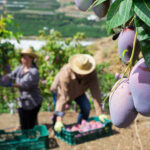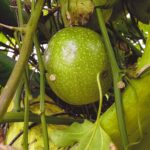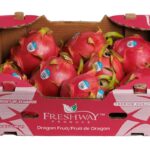Peruvian fruit to access eight new markets in 2024

The Ministry of Agrarian Development and Irrigation (MIDAGRI) announced that the National Agricultural Health Service (SENASA) has projected 13 new international market accesses for Peruvian agricultural products this year, including ten fruit products to eight destination markets.
To know the current status of trade agreements, fruits, and markets that are soon to be opened for export, we spoke with Orlando Dolores, general director of plant health for Senasa.
Does the initiative to promote new trade agreements come from the government or the private sector?
We are an entity that provides services and are always subject to requests from our producer and agro-exporter associations that ask us to manage the access of different products to international markets.
We have been working for many years, with many countries and we have advanced on some products in different destination countries. In that sense, in the year 2023, we evaluated products and we have prioritized some that have made progress in destination countries.
We determined 13 products, and we presented a work plan to the Ministry of Agrarian Development and our Foreign Ministry so that in a joint effort we can achieve access to these products in 2024.
What are the main difficulties you have faced?
The main difficulty we had was the pandemic and it did not only affect Peru, but it affected the whole access process, since it was not possible to make visits at the origin, bilateral meetings could not be held to discuss technical issues.
This year we are trying to accelerate these processes in joint meetings, so we have scheduled bilateral meetings with different countries to achieve access of Peruvian products to new markets, which are already in the final phase.
For fresh fruit, which is the agreement that is most advanced and about to be approved?
An example are table grapes to Chile, pomegranate, mango, avocado, blueberries, and frozen fruits to China, lucuma to Colombia, avocado to Malaysia, citrus to New Zealand, blueberries to Japan, citrus to Vietnam, and asparagus, cape gooseberry and pitahaya to the United States.
We are working to arrange a face-to-face meeting to sign the protocols with China. We are prioritizing markets in Asia, such as China, Korea, and Japan, where we are about to complete the access of blueberries and last year we completed the access of grapes.
This year we want to give a lot of emphasis, to the different sectors of Peru and achieve these accesses.
What are the requirements of the 8 new markets for Peruvian fruit?
To date, we have not had any problems, since we try to meet the requirements of all importing countries.
At SENASA we have been very strict in this, we have had some episodes of pests, but we have overcome them all and we do not see obstacles for Peruvian exports. I think we are very transparent, where we receive visits from many importing countries and we explain to them what we are doing.
Our pest surveillance system is working at 100%.
United States
We are working with the United States on the access of asparagus without fumigation, this is an issue that we have been working on for several years, it is prioritized and we understand that the American authority, APHIS, is currently going through the regulatory process for this product.
Pitahaya is also on a prioritized list, so we continue working to maintain these priorities to achieve access.














































